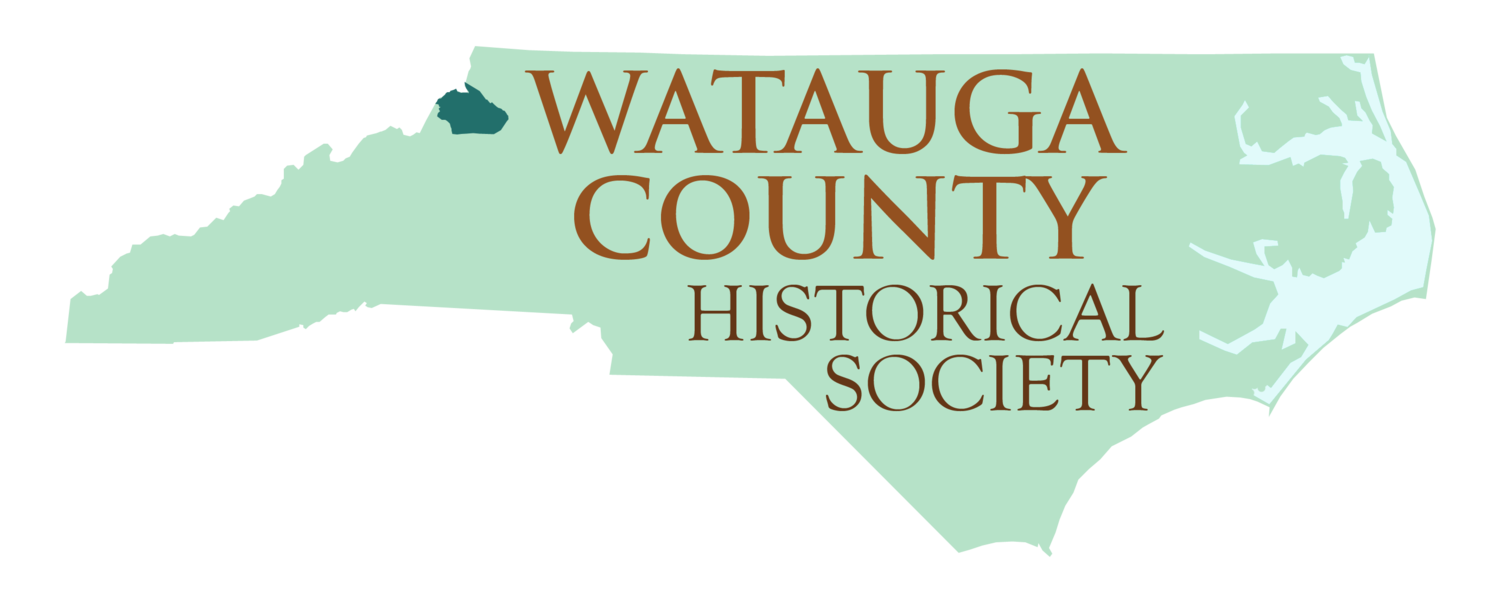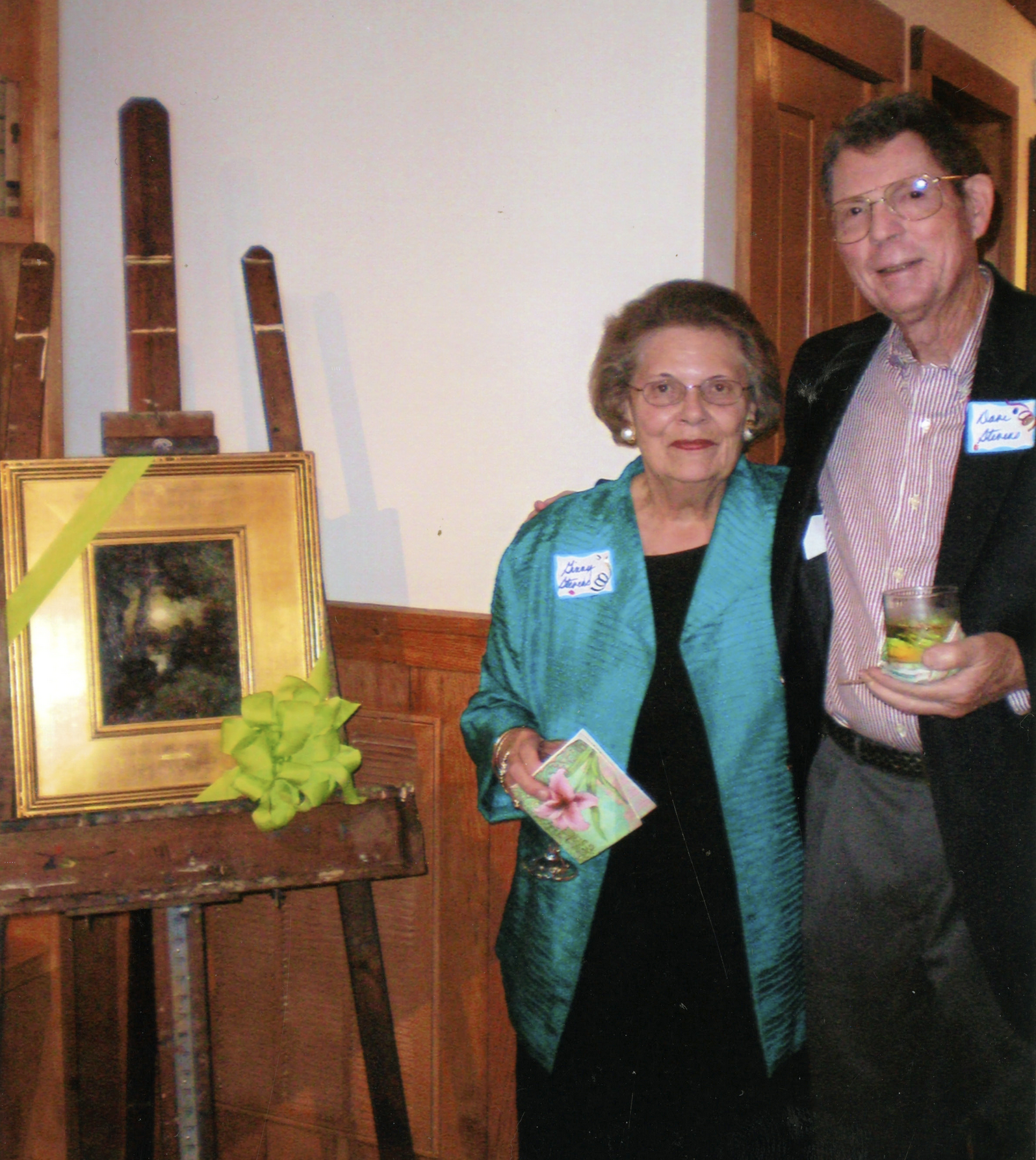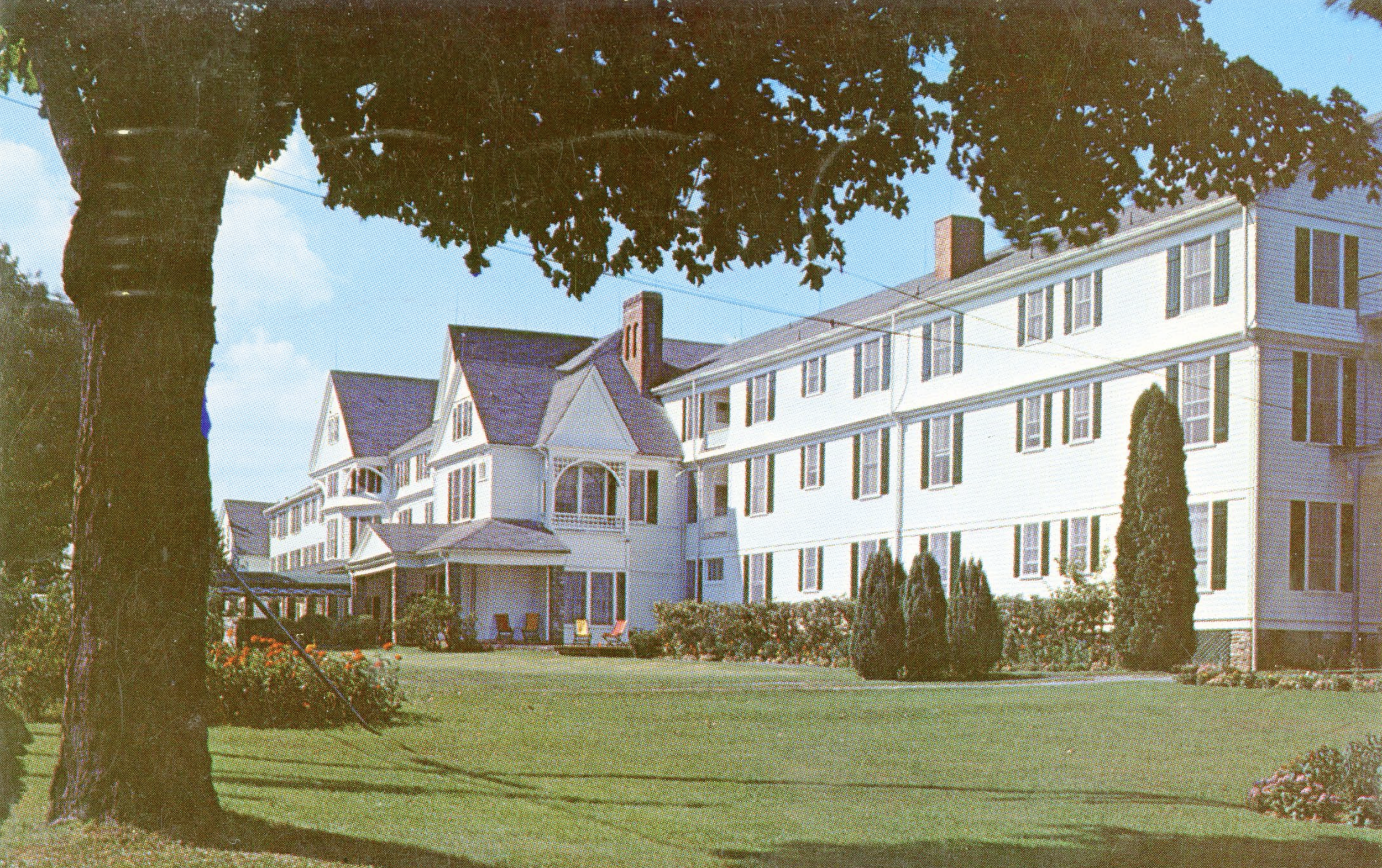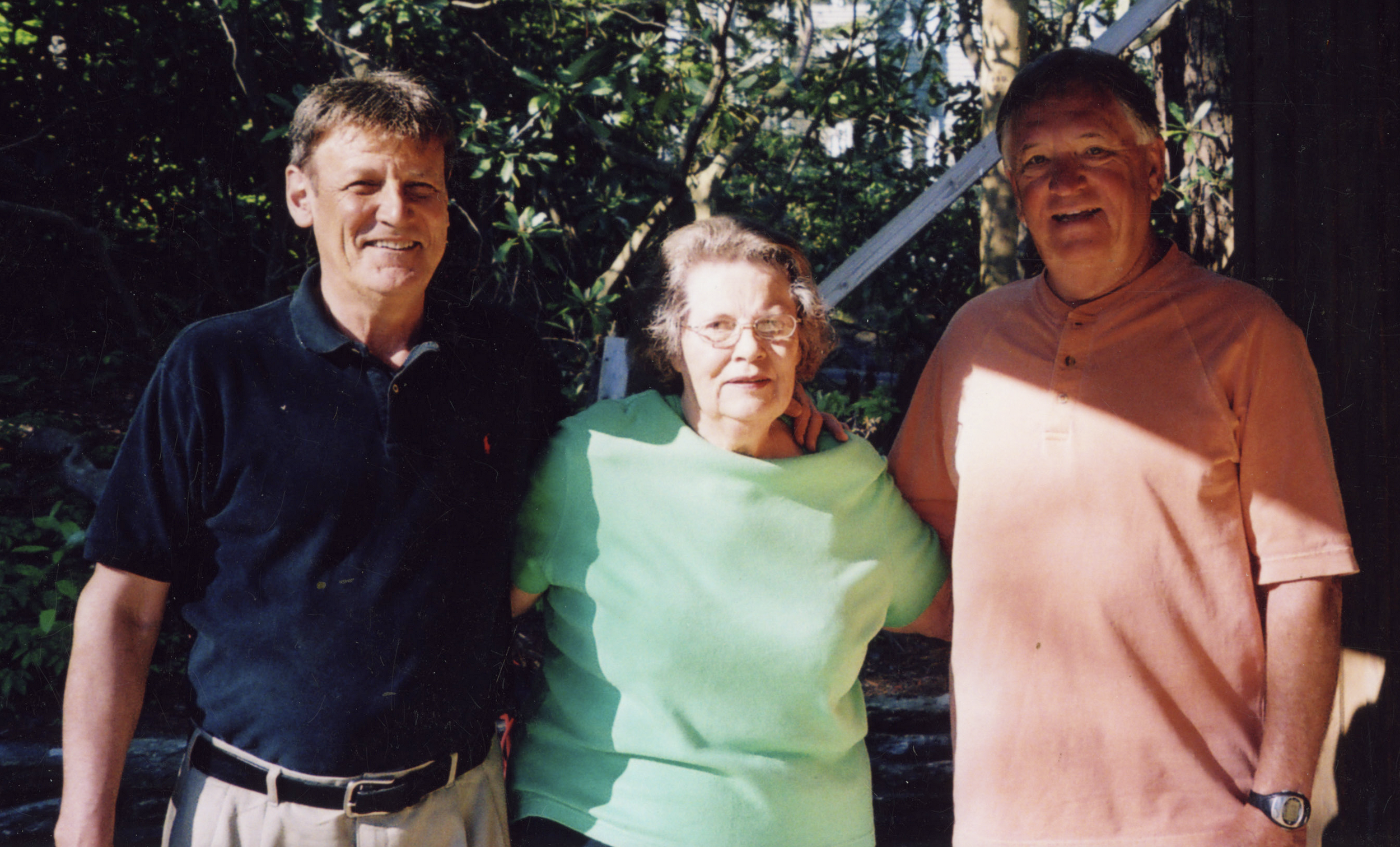Sai Estep
December 23, 2023
Introducing our next class of honorees, the Watauga County Historical Society (WCHS) is building upon its Hall of Fame for the year 2023, an initiative started in 2022 as part of Boone’s 150th celebrations. WCHS is delighted to announce that Virginia “Ginny” Stevens (1935-2017) has been named one of this year’s inductees.
Born in Chicago to George Brahnam and Lydia Virginia Raleigh Storr Atkinson, Virginia “Ginny” Stevens grew up in Northfield, Illinois, before making her way to North Carolina to attend Duke University, where she was active in groups such as Student Government and the Women's Housing President’s Board. After graduation, she spent a number of years back in Illinois, where she had a career as an elementary school teacher. Upon returning to North Carolina with her husband David, Ginny gained her preservation chops in Raleigh, dedicating years of service to NC Preservation, the Mordecai Square Historical Park, and the Historic Preservation Foundation of North Carolina.
Ginny then took her energy, knowledge, and experience to Blowing Rock, where she and her husband David moved in 1985. Seeing a need to preserve and promote the town’s rich history, she quickly positioned herself to be a bastion for historic preservation in Blowing Rock right from the start. During that first year as a Blowing Rock resident, Ginny co-founded the Blowing Rock Historical Society, joining like-minded individuals to help preserve the history of the town. Often when people move to a new town, they take a backseat to the area’s activities, choosing to be passive occupants of the space. This was not the case with Ginny Stevens; she dove in headfirst by engaging the town and getting to work.
The Edgewood Cottage before restoration. Image courtesy of the Blowing Rock Historical Society Collection, Digital Watauga Project.
When reviewing Blowing Rock Historical Society’s accomplishments over the years, it’s clear that Ginny played an important role in meeting many of these goals. Ginny helped lead the project to restore the Edgewood Cottage, the former home of famous artist Elliot Daingerfield. Working with other members in the town, Ginny championed the preservation, restoration, and repurposing of the structure. Former North Carolina House member and active Blowing Rock resident Cullie Tarleton remembers working closely with Ginny on the Edgewood Cottage as well as many other projects: “[Ginny] was a visionary leader, a good organizer, and a hard worker. She didn’t just excel at organizing; she rolled up her sleeves and did the actual work.” Tarleton credits Ginny with being a leader in negotiations with the Town of Blowing Rock to save as much of the original design and woodwork as possible in the restoration of the building. Many photos taken by Ginny of the restoration process can be found on Digital Watauga’s website, within Series 03 of the Blowing Rock Historical Society Collection.
This spirit of industriousness was also evident in Ginny’s presence at town council meetings, where Tarleton says she was often “right up front, speaking her mind.” ASU senior lecturer Trent Margrif echoes this sentiment, saying that without Ginny’s determination and vocal nature, Blowing Rock would likely look different than it does today. “Ginny would interview owners of buildings, trying to figure out what the histories were,” stated Margrif. Much of this information was useful for the book The Architectural History of Watauga County, published by the Watauga County Historical Society in 2009. By digging into the background of these buildings, Ginny and other members of Blowing Rock were able to lay the groundwork for stronger historical preservation efforts in the town, such as saving the Hayes House in 1993, as well as discovering that the Bollinger-Hartley bungalow was eligible for the National Register of Historic Places. Throughout the process of widening of Highway 321, Ginny was among citizens to voice concerns, placing pressure on NCDOT to be as minimally invasive as possible. In a 1996 steering committee meeting of stakeholders and NCDOT members, the minutes state that, “Ginny Stevens of the Blowing Rock Historical Society commented that she was skeptical about the effectiveness of a traffic control program [and that] local merchants are concerned about their businesses remaining open and viable during the construction period. She stated that the community would disappear if traffic no longer passed through it, and that residents are concerned about the historic resources. She stated that she appreciated the constraints facing the study team, but she wanted the study team to understand how the locals feel.”
The Green Park Hotel, circa 1964. Image courtesy of the Bobby Brendell Postcard Collection, Digital Watauga Project.
Today, when one arrives at Blowing Rock, vestiges of the town’s heyday of opulent hotels remain, evident in the historic Green Park Inn; it still stands partly due to Ginny being a bulwark against outside interests that wanted to see it demolished. In an interview with the Winston-Salem Journal in 2009 about the hotel going up for auction, Ginny stated, “Much of our legacy is the grand hotels that started this community, and we really need to keep those."
Other major accomplishments Ginny had a hand in include the refurbishment of the 1888 Museum–the last remaining cottage of the bygone Watauga Inn, where she spent many hours greeting and educating visitors; the Historical Marker Program, which was created in partnership between the Blowing Rock Arts and History Museum (BRAHM) and BRHS and has identified more than 125 spots in downtown Blowing Rock that are at least 50 years old; and also having the Green Park Historic District placed on the National Register of Historic Places, among many other projects.
Ginny also contributed greatly to the documentation and promotion of the town’s history by helping publish the Volumes I and II of the popular Postcards of Historic Blowing Rock, as well as Green Park Historic District. Trent Margrif, author of Blowing Rock Revisited, was encouraged by Ginny to take on the project, which showcases a wealth of images of historic Blowing Rock, mostly from the late editor of the Blowing Rocket newspaper, Jerry Burns. All proceeds from the book go toward the Blowing Rock Historical Society.
Doug Pegram, Virginia Stevens, and Lowell Thomas at the Edgewood Cottage, May 29, 2008. Image courtesy of the Blowing Rock Historical Society Collection, Digital Watauga Project.
In recognition of her extensive accomplishments, Ginny was the recipient of several awards, including Blowing Rock Rotary Citizen of the Year in 2001, Blowing Rock Woman of the Year in 2001, and the 2011 Woman of the Year Award for the High Country. She was also presented with the prestigious Order of the Long Leaf Pine in 2010, the highest civilian honor given to North Carolina residents.
A remarkable example of the impact one person can have on a place, Ginny Stevens managed a delicate balance between promoting the economic health of a town, while still being fiercely protective of the historic elements at the heart of Blowing Rock. While Blowing Rocket editor Jerry Burns earned the nickname “Mr. Blowing Rock,” Ginny Stevens is often affectionately called “Mrs. Blowing Rock,” thanks to her indelible presence in the town. Her legacy lives on through the ongoing work of organizations such as the Blowing Rock Historical Society, BRAHM, and passionate individuals carrying on the torch. Former Chestnut Drive that runs adjacent to BRAHM and Edgewood Cottage now bears the name Ginny Stevens Lane, due to the efforts of Cullie Tarleton, Marcia Quinn, and others to commemorate Stevens after her passing. BRAHM also has a gallery named after Ginny Stevens, further keeping her memory alive. Because of Ginny Stevens’s prolific accomplishments to the preservation of Blowing Rock’s history, we are delighted to honor her with a well-deserved spot on WCHS’s Hall of Fame for 2023.
The WCHS Hall of Fame honors individuals, either living or dead, who have made significant and lasting contributions to Watauga County’s history and/or literature, including those whose efforts have been essential to the preservation of Watauga County’s history and/or literature. Honorees need not have been residents of Watauga County. The WCHS is particularly interested in honoring individuals who meet the above criteria but who may have been overlooked in traditional accounts of Watauga County’s history and literature, including women and people of color. Selections for this class were made from nominations submitted by members of the Digital Watauga Project Committee (DWPC) of WCHS as well as the public.
References
Thomas Sherrill, ”Blowing Rock Honors Virginia ‘Ginny’ Stevens,” Watauga Democrat, 11 January 2018, online, https://www.wataugademocrat.com/blowingrocket/blowing-rock-honors-virginia-ginny-stevens/article_842efb77-6429-56ef-9f83-123a2b97ef65.html.
H. Franklin Vick to Chrys Baggett, “Environmental Impact Statement of the Proposed Improvement of US 321 from SR 1500 to US 221,” North Carolina Department of Transportation, 3 August 1995, online, https://edocs.deq.nc.gov/WaterResources/DocView.aspx?dbid=0&id=120364&page=2&cr&cr=1.
Jan Todd, “Virginia ‘Ginny’ Stevens of Blowing Rock Passed Away December 6th,” High Country Press, 12 December 2017, online, https://www.hcpress.com/front-page/virginia-ginny-stevens-blowing-rock-passed-away-december-6th.html.
Tzar Wilkerson, “Ginny Stevens Lane Dedication Honors the Contributions of a Pillar of Blowing Rock Community This Sunday, June 16,” High Country Press, 13 June 2019, online, https://www.hcpress.com/front-page/ginny-stevens-lane-dedication-honors-the-contributions-of-a-pillar-of-blowing-rock-community.html
Legacy.com, “Virginia Stevens Obituary (1935 - 2017),” 10 December 2017, online, https://www.legacy.com/us/obituaries/newsobserver/name/virginia-stevens-obituary?id=11838911.
Monte Mitchell, (2009, July 18). “Going for Green: Blowing Rock Landmark Hotel to be Auctioned Off to Someone Who Will Preserve It, Town Hopes,” Winston-Salem Journal, 18 July 2009, online https://journalnow.com/going-for-green-blowing-rock-landmark-hotel-to-be-auctioned-off-to-someone-who-will/article_54ed7f99-3094-55c6-a481-e359bed57f3b.html.
Thomas Sherrill, “Virginia ‘Ginny’ Stevens Dies,” Watauga Democrat, 12 December 2017, online, https://www.wataugademocrat.com/community/virginia-ginny-stevens-dies/article_490ad1be-f074-5092-9edb-398b047df32f.html.




